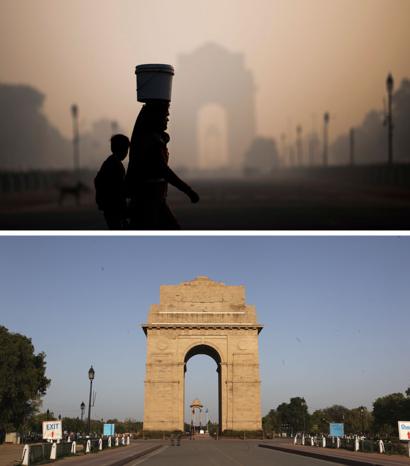No products in the cart.
India’s air pollution dropped 40-50% Since Coronavirus lockdown, read details
Amid the nationwide lockdown owing to the fast-spreading coronavirus pandemic, homeless people and daily wage workers, who migrate to big cities from their home towns in search of jobs, are combating hunger for survival as the fast-spreading disease has now created a panic situation across India.
The situation had gone from bad to worse and during this crisis, celebrities, entrepreneurs, businessmen rose to the occasion by doing their best to help the country combat the pandemic.
There have been 23,452 confirmed coronavirus cases in India on Friday, including 723 deaths. So far 4,814 people have recovered from the coronavirus pandemic.
People across the nation are forced to work from home, kids are not playing outside home and almost everything seems like it’s out of control.
However, amid the lockdown, we have one positive news that is our planet is healing and getting back to its normal stage. As per recently captured images from Copernicus Sentinel-5P satellite, several cities across the nation have seen a considerable drop in pollution.

Satellite maps produced using data from Copernicus Sentinel -5P satellite shows a considerable drop in average nitrogen dioxide concentrations over India from 24th March 2020 to 20th April 2020.
The images also disclose at least a 40 to 50 per cent drop in pollution levels as compared to same time last year.
According to Claus Zehner’s point of view, who is ESA’s Copernicus Sentinel-5P mission manager, “What is interesting in these new maps are the high values of nitrogen dioxide concentrations over northeast India. Our analysis shows that these clusters are directly linked with the locations of the ongoing coal-based power plants. The largest power station in India, the Vindhyachal Super Thermal Power Station, shows a reduction of only around 15% compared to the same time last year.”
Nitrogen dioxide is usually released in the atmosphere from power plants, industries including vehicles and thus causing several respiratory problems to the living beings. Nonetheless, ever since the shutdown, air pollution dropped drastically.
Another report by Reuters disclosed a 9.2 percent drop in power consumption in March 2020. From the data received by the Power System Operation Corporation Ltd. (POSOCO), the report disclosed that in March 2020, people consumed 100.2 billion kilowatt-hours, whereas in March 2019, it was 110.33 billion kilowatt-hours.
Claus further said: “Weather variability is an important factor to consider when making assessments such as these, which is why our team has averaged the data over a longer period of time. In this case, we can clearly see the decreased concentrations are due to human activity.”








